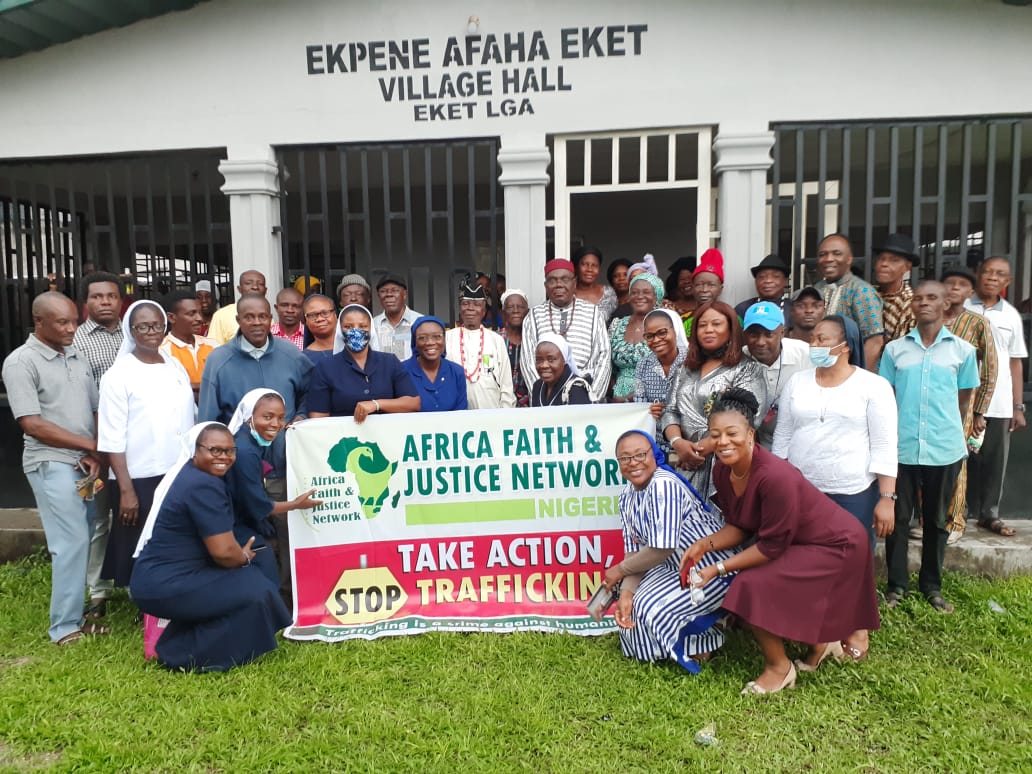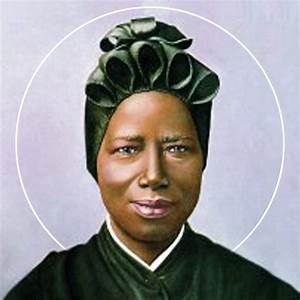Human Trafficking
The School Sisters of Notre Dame have always had a natural inclination to work diligently and internationally on the issue of human trafficking. Sisters educate within schools and communities about human trafficking in order to keep people informed of the possibilities of exploitation and how they can be more confident in avoiding the traps.
Trafficking in persons and other contemporary forms of enslavement are a worldwide problem that needs to be taken seriously by humanity as a whole: since criminal organizations employ global networks to achieve their goals, efforts to eliminate this phenomenon also demand a common and, indeed, a global effort on the part of various sectors of society.
Fratelli Tutti 22
Advocating to end human trafficking
Human Trafficking is a crime against humanity that involves an act of recruiting, transporting, transferring, harbouring or receiving a person through a use of force, coercion or other means, for the purpose of exploiting them. Human trafficking includes domestic work, construction, agriculture, sexual exploitation and forced marriages.
Traffickers use violence, threats, deception, debt bondage and other manipulative tactics to trap victims in human trafficking.
Every year, thousands of men, women and children fall into the hands of traffickers, in their own countries and abroad. Every country in the world is affected by trafficking, whether as a country of origin, transit or destination for victims.
Who are the victims of human trafficking/modern day slavery?
According to the 2018 U.N. Global Report on the Trafficking in Persons, 80 percent of all detected trafficking victims are women and children. In terms of the different types of trafficking, sexual exploitation and forced labor are the most prominent. The UN report shows that trafficking can have numerous other forms, including victims forced to act as beggars, into sham marriages, to commit benefit fraud by applying for benefits, into pornography or into organ removal, among others.
The Polaris Project has a resource on how to recognize the signs of a trafficking victim.
What are the International Laws that criminalize trafficking?

SSNDs in Nigeria at a Human Trafficking Awareness Event organized by Africa Faith and Justice Network (AFJN).
The United Nations Protocol to Prevent, Suppress and Punish Trafficking in Persons (ratified by general Assembly 2000) has three main purposes:
- To prevent and combat trafficking in persons, paying particular attention to women and children;
- To protect and assist the victims of such trafficking, with full respect for their human rights; and
- To promote cooperation among States Parties in order to meet those objectives.
The number of countries that have criminalized most forms of trafficking as set out in the U.N. Trafficking in Persons Protocol has increased from 33 in 2003 to 158 in 2016. Such an exponential increase is welcomed, and it has helped to assist the victims and to prosecute the traffickers. Unfortunately, the average number of convictions remains low. Findings show that there is a close correlation between the length of time the trafficking law has been on the statute books and the conviction rate. This is a sign that it takes time, as well as resources and expertise, to chase down the criminals.
Who is most vulnerable to human trafficking?
People escaping from war and persecution are particularly vulnerable to becoming victims of trafficking. The urgency of their situation might lead them to make dangerous migration decisions. The rapid increase in the number of Syrian victims of trafficking in persons following the start of the conflict there, for instance, seems to be one example of how these vulnerabilities play out. Conflicts create favorable conditions for trafficking in persons by generating a mass of vulnerable people escaping violence. Furthermore, armed groups engage in trafficking in the territories in which they operate, and they have recruited thousands of children for the purpose of using them as combatants in various past and current conflicts. While women and girls tend to be trafficked for marriages and sexual slavery, men and boys are typically exploited in forced labor in the mining sector, as porters, soldiers and slaves.
Profile of the traffickers
As for nearly every other crime, most trafficking in persons offenders are male. Roughly 6 in 10 offenders are male across all stages of the criminal justice process. Even so, the significant share of women offenders is remarkable, as there are few crimes with such high levels of female participation.
What you can do:
- Learn more about human trafficking and educate others
- Collaborate with other agencies and groups to combat this menace
- Donate to organizations that support trafficking victims and survivors.
- Pray for an end to modern slavery in all its forms
Meet Saint Josephine Bakhita: Patron Saint of Human Trafficking

Saint Josephine Bakhita
We are pleased to introduce a saint for victims of human trafficking, Saint Josephine Bakhita a woman from Sudan who was a victim of trafficking.
Read her story and be inspired and help combat human trafficking.
Our foundress Blessed Mary Theresa of Jesus Gerhardinger during her life felt called and was in negotiation to open a mission school for girls in the same town in Sudan where Saint Josephine Bakhita comes from. Read about the initial call of School Sisters of Notre Dame to Sudan.
Today, SSND responds to needs in South Sudan, the place where the first call to open a mission in Africa originated.
Other Resources: